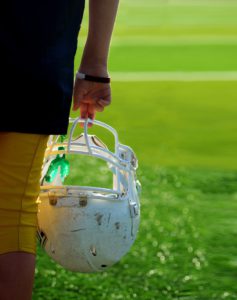Some sports are more dangerous than others. All contact sports are by default, more dangerous than sports where athletes have no interaction with one another. With that in mind, sports like soccer, basketball, rugby and especially hockey and football, can lead to some serious injuries.
Football is a very rough sport, where athletes wear all sorts of protective gear, from shoulder pads to knee pads, as well as a helmet. The helmet is particularly necessary. Brain injuries are something every athlete should avoid and when a sport has a helmet as a mandatory piece of gear, you should know what to expect.
Here is what you should know about football and brain injuries.
Chronic traumatic encephalopathy – CTE

Football players often get lots of head butting, quite literally. What happens to some players, after a time, is that they can develop CTE, which is a very dangerous form of brain trauma, the repeated kind, which chronic implies. This can lead to serious issues like memory loss or even depression and suicide.
CTE increases the risk of getting other diseases, most notably Alzheimer’s, but that is just one of the possibilities.
CTE is almost always diagnosed after a football player’s, or any person’s death. A brain autopsy must be performed. But, some doctors diagnose living players with CTE, which can be dangerous, because it shares symptoms with many other dangerous conditions and diseases, such as diabetes, hypertension, sleep apnea and many more.
A Wrong Diagnose? – Is it Dangerous?
In most cases, a wrong diagnosis is dangerous, not because you might be curing the wrong thing, but because the real disease might be left unchecked. That might lead to more issues, depending on how much toll can that disease leave on the body if left unmonitored and untreated.
If it is the right diagnosis, then there might be ways of treating the player before any more damage takes place.
Why CTE? – Head Trauma

CTE happens over a period of time when there is a lot of head trauma. Most players suffer a concussion during their football career, one if not many of them.
But concussions are not the only issue. Most players have subconcussive blows to the head, which also does damage, and it even might be the worst kind, because it leaves the player with little to no symptoms, at first.
How to Prevent Injuries?
Players in an upright position are less likely to get any sort of brain trauma, due to their position when being tackled. The rules would have to adapt to have the players be in upright positions rather than on all fours or with one arm on the grass.
This is what you should know about football and brain trauma. It is inevitable, in such a contact sport, where tackles are as frequent as kicks in soccer.






